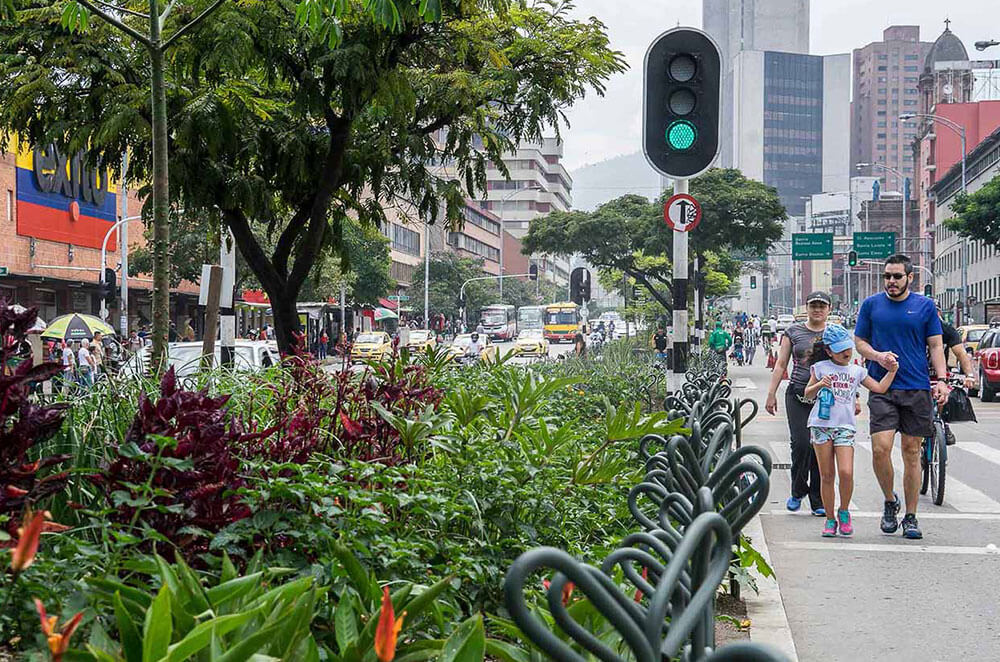Colombia, Brazil, Costa Rica, Mexico, Chile... These countries have something more in common than just being part of Latin America and the Caribbean. In recent years, they have all developed significant projects that have transformed public spaces through the use of green infrastructure.
These kinds of projects, called green corridors or ecological corridors, are essential in the region due to their dual ecological and social function. Latin America and the Caribbean are particularly vulnerable to the consequences of climate change, which impact both people and nature alike. Green corridors in major cities offer citizens a better use of public spaces and help control pollution, biodiversity degradation, high temperatures, and water shortages.
Mexico City: More Green, More People, More Water
Essentially, green corridors are linear urban spaces that offer ecological, social, and cultural services. They could be abandoned train tracks or water canals that run through a city, which are transformed with green infrastructure to give them a new, sustainable use.
Such is the case with the Cuernavaca Railway Linear Park in Mexico City. The process to convert 4.5 kilometers of what was once the path of the historic railway into an urban forest began in 2016. All the plants and trees used are native to the area and were chosen for their ability to create a self-sustaining ecosystem.
Moreover, the linear park was designed to promote drainage and water collection, which is then used during the dry months. By connecting 22 neighborhoods in the city, it is estimated that the park benefits around 50,000 people, in addition to protecting local biodiversity and improving air quality.
Healthier Cities, Healthier People
Ideally, green corridors should connect different green spaces in the city, creating a sort of ‘urban nature network’ where local flora and fauna can thrive, along with people. These green spaces are ideal for installing public entertainment areas, pedestrian and cycling paths, cultural spaces, and urban gardens.
The benefits for people of being in contact with nature are increasingly evident, and these corridors encourage more walking, positively impacting people's health and reducing car usage.
On the other hand, ecological corridors play an increasingly important role in a world threatened by global warming. Global temperatures are rising yearly, which is even more noticeable in cities due to the 'urban heat island' effect, where large cities experience higher temperatures than surrounding areas.
Medellín, a Success Story
Examples like Medellín have shown that green corridors can help decrease the temperature of a city by several degrees. Known as the city of eternal spring, in recent years Medellín had been experiencing temperatures well above the norm, risking its famous temperate climate.
In 2016, the first ecological corridor project was launched to counteract this effect. Today, there are over 30 corridors connecting green areas, vertical gardens, parks, and water channels throughout the city thanks to the hundreds of thousands of plants and trees that have been planted.
In the first three years of the project, the temperature in Medellín decreased by 2°C, and it is projected to continue decreasing by up to 5°C in the coming decades, even taking climate change into account. Another significant effect of the corridors has been the considerable reduction of pollution in the city and, therefore, the improvement in air quality.
Other cities in the region, such as San José, Costa Rica, and Santiago, Chile, have also successfully implemented the theory of ecological corridors. In San José, for example, 25 kilometers of linear green infrastructure were created along the river to provide a sanctuary for rich local biodiversity, and for people. In Santiago, the Mapocho Project connects different areas of the city through a 42-kilometer green linear corridor.
These are just a few examples of the work being done in the region to achieve cities that are more resilient against the threats of global warming, which will help protect animals, plants, and people alike.

